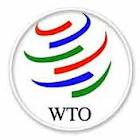The General Agreement on Tariffs and Trade (GATT) came into existence during the UN Conference on Trade and Employment in 1947. GATT held a total of 8 rounds in between 1947 and 1986; and most of its achievements were related in the reduction of tariff in international trades. Uruguay Round was the 8th round of Multilateral trade negotiations conducted within the framework of the General Agreement on Tariffs and Trade (GATT), spanning from 1986-1994 and embracing 123 countries as “contracting parties”. Uruguay Round transformed the GATT into the World Trade Organization. It allowed full access for textiles and clothing from developing countries, and an extension of intellectual property rights.
World Trade Organization
World Trade Organization aims at multilateral trade negotiations and helps resolving the trade disputes between member nations. The organization officially commenced on January 1, 1995 under the Marrakech Agreement, replacing the General Agreement on Tariffs and Trade (GATT), which commenced in 1948. WTO deals with the global rules of trade between nations. Its main function is to ensure that trade flows as smoothly, predictably and freely as possible. WTO's headquarters is in Geneva, Switzerland. It has 153 members,representing more than 97% of the world's population.
Doha Development Round
Doha Development Round is the current trade-negotiation round of WTO which commenced in November 2001. Its objective is to lower trade barriers around the world, which will help facilitate the increase of global trade.The round is in stalled stage due to the difference in opinion in major issues such as agriculture, industrial tariffs and non-tariff barriers between developed nations and developing nations like Brazil, China, India, South Korea, and South Africa.
India and WTO
India has been a WTO member since 1 January 1995. Currently India is the member of these following negotiating groups. Negotiating groups often speak with one voice using a single coordinator or negotiating team
1. G-20 : Coalition of developing countries pressing for ambitious reforms of agriculture in developed countries with some flexibility for developing countries (not to be confused with the G-20 group of finance ministers and central bank governors, and its recent summit meetings).It actually has 23 member countries.
2. G-33 : Also called “Friends of Special Products” in agriculture. Coalition of developing countries pressing for flexibility for developing countries to undertake limited market opening in agriculture. It has 46 member countries.
3. NAMA-11 : Coalition of developing countries seeking flexibilities to limit market opening in industrial goods trade. It currently has 11 member countries.
4. “W52” sponsors : Sponsors of TN/C/W/52, a proposal for “modalities” in negotiations on geographical indications (the multilateral register for wines and spirits, and extending the higher level of protection beyond wines and spirits) and “disclosure” (patent applicants to disclose the origin of genetic resources and traditional knowledge used in the inventions). The list includes as groups: the EU, ACP and African Group.
Top Up Terms
- Trade barrier : Restrictions in international trade within multiple countries.
- Tariff barriers: Tax on imports or exports.
- Non-tariff barriers to trade : Barriers other than tax. eg - Import licenses,Export licenses,Import quotas,Subsidies etc
Latest News of WTO
23 September 2011 : WTO economists announced today that they are revising their 2011 trade forecast to 5.8%, down from their earlier conservative estimate of 6.5%, since trade has grown more slowly than expected in recent months and the outlook for the global economy is increasingly uncertain. Director-General Pascal Lamy said: “The multilateral trading system has been instrumental in maintaining trade openness during the crisis, thereby avoiding even worse outcomes. Members must remain vigilant. This is not the time for go-it-alone measures. This is the time to strengthen and preserve the global trading system so that it keeps performing this vital function in the future.”






0 comments: